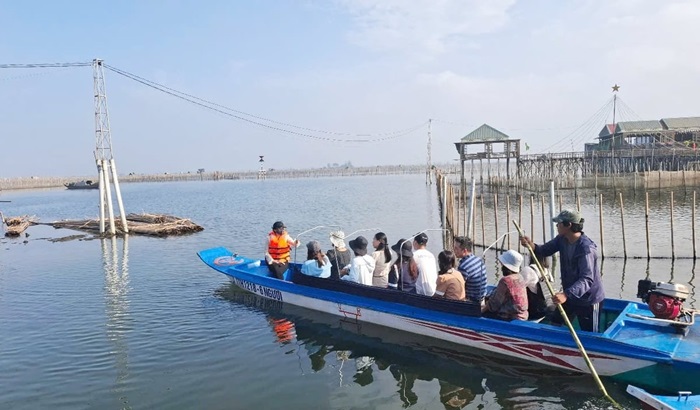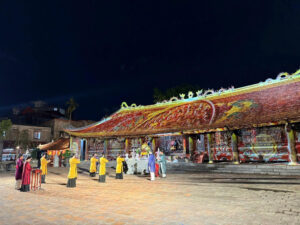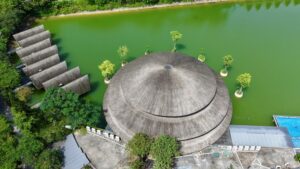Lying about 3km in the South- east of Quy Nhon city, Ghenh Rang is a famous tourist site with green mountains and blue sea.
The beaches near Ghenh Rang extend from An Duong Vuong Street at the city's center to Hoang Hau Beach.
From Ghenh Rang mountainside visitors can see the Phuong Mai peninsula and Thi Nai lagoon.
Facing the sea is a view of the temple of Han Mac Tu, a famous poet of Vietnam.Ghenh Rang is set in a row of mountains expanding to Quy Hoa beach which is considered the best beach in Binh Dinh and well-known for its ideal convalescent homes.
The path to Ghenh Rang is covered with flowers like wild orchids, acacias and daisies. Once the water is calm and clear, tourists can see the pebbles on the bottom, which is called the beach Bai Da Trung (Stone Egg Beach) or Queen Beach, where Queen Nam Phuong, wife of Bao Dai King (the last king of Vietnam) bathed and relaxed in the early 19th century.
This beach is scattered with big rocks, when the wind starts to chop up the sea, the waves crash on the rocks sending up clouds of spray. A fresh water stream from springs in the hills comes out between the rocks.
Especially striking on the beach are giant rocks – one looks like a human face, another like a lion heading out to the sea. A large rock is named Vong Phu (Waiting for her Husband).
Near the stony beach is Queen Beach
The path to Ghenh Rang passes by the modest grave of poet Han Mac Tu. The grave lies at the mountain’s foot. Tourists should not forget to burn incense for the sensitive poet who suffered leprosy alone. Visitors may feel pity for the miserable life of this talented poet. Unlike the final years of his life, the grave is drenched in sunlight, clouds, winds, moonlight and the murmurs of the sea all the year round.
Basing on its geographic features and ideal conditions for convalescing, Ghenh Rang was ranked among the top national landscapes by the Ministry of Culture and Information in 1991.
Compiled by Thanh Pham (TITC)














